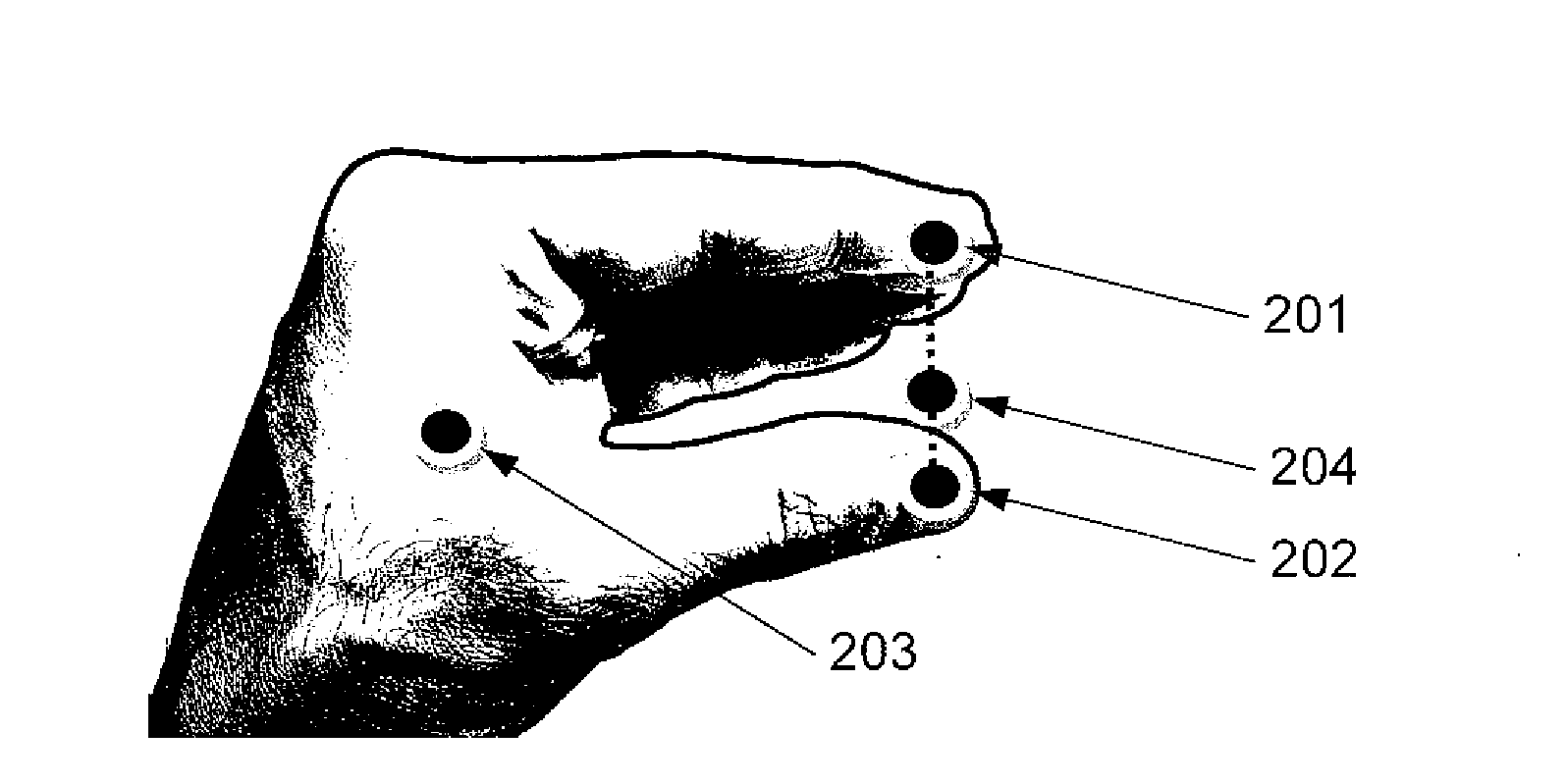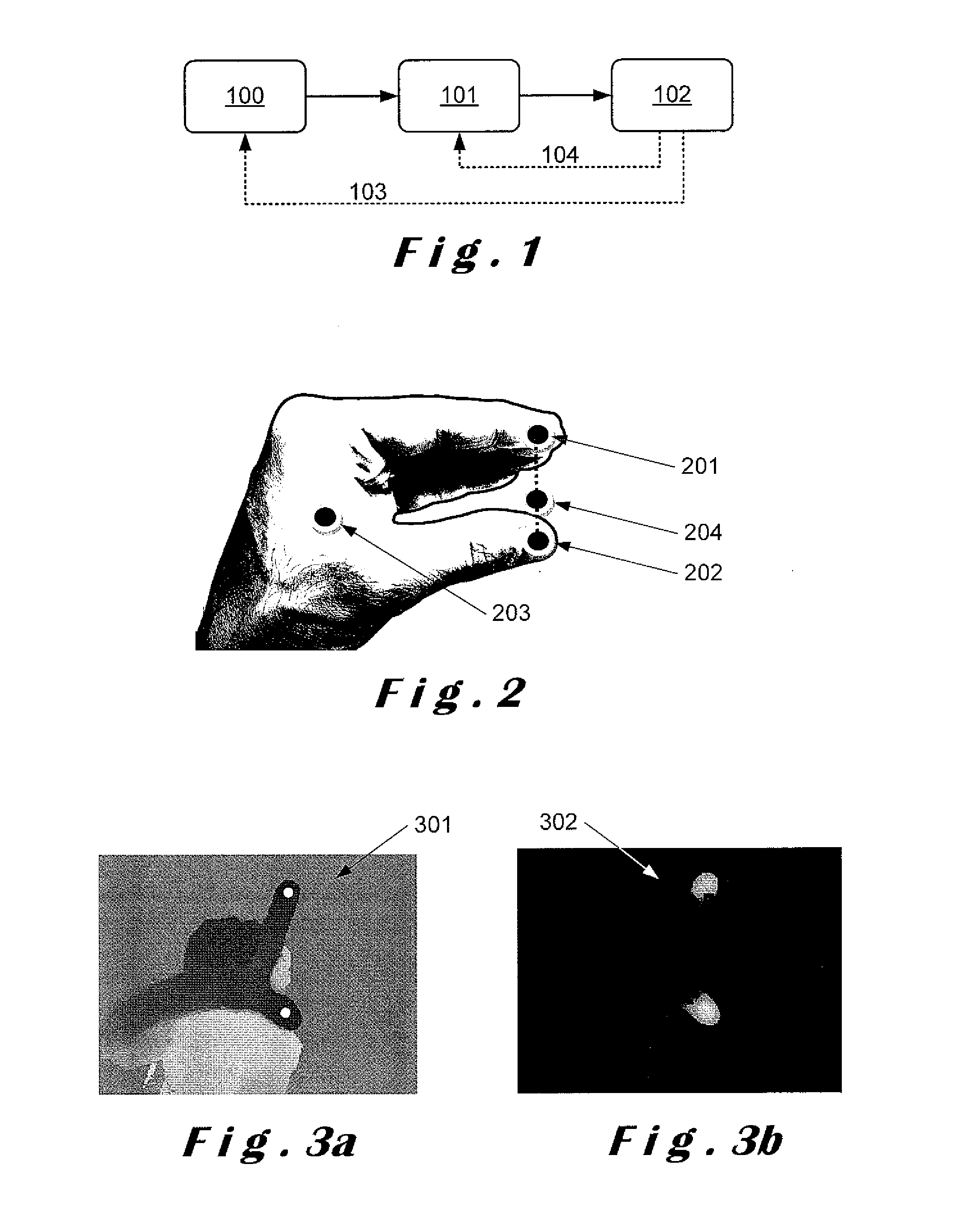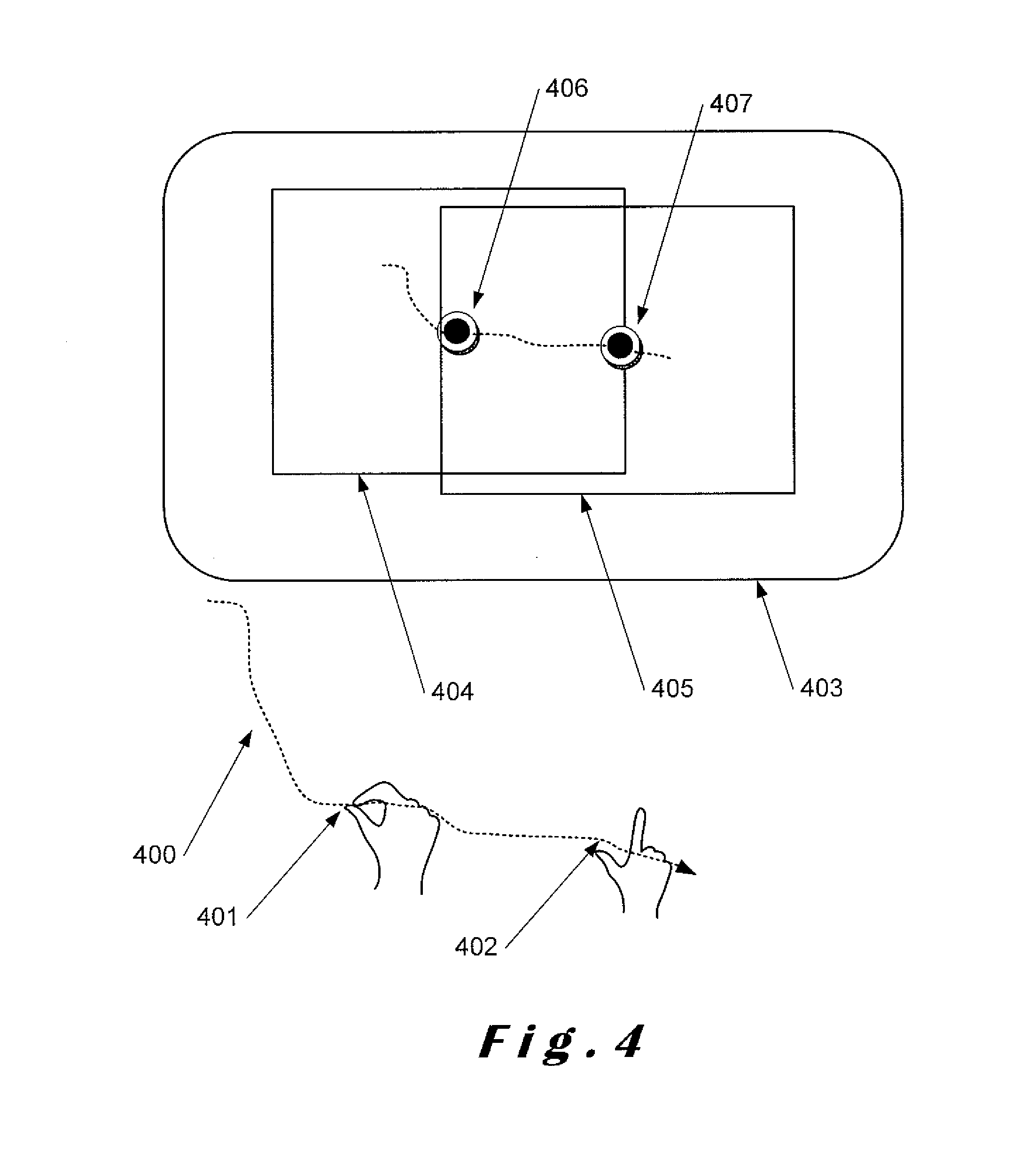However, the intrinsic limitations of conventional 2D imaging techniques, and, more particularly the intrinsic limitations of the imaging
system, make detection and recognition of objects unreliable in an environment having varying illumination.
For instance, finger-like objects, such as, pens, may be incorrectly identified or detected as fingers due to the technique used, or the tracking of a finger within the sequentially captured images may be lost due to the dependency of
image quality with respect to the scene illumination.
However, it is still not possible to analyse efficiently and accurately freely moving user parts (for example, a hand) in a real 3D environment as the distance of the user parts to the imaging device may vary significantly and their representation in the 2D captured image may consequently become inconsistent.
However, such gesture-based methods have limitations and therefore cannot provide a robust solution, providing efficient real-
time processing, on low-end platforms for resolving 3D pointing like interactions with a computer nor can such methods be operated in a dark environment in which colours may not be distinguishable.
Moreover, the “selection” gesture detected is not accurate since there is no real objective distance and size measurements.
Furthermore, such a solution cannot be used to support a high reliability level requirement, such as, support of varying orientation of the hand in 3D space, nor finger-based 3D gestures.
If 2D
image capture solutions suffer from strong unrecoverable limitations for enabling robust and efficient hand
gesture recognition in any situation or environment, it is accepted they are, as a consequence, not appropriate for enabling further derived
signal processing methods which provide reliable control commands or reliable related human-to-computer interactions.
In addition, the provision of absolute size of objects and distance measurements breaks the computational power dependency (real-time requirement aspect) to the distance of the objects of interest (that is, the hands) from the
image sensing device.
Despite growing prior art in the domain of 3D hand-based
gesture recognition, obtaining an accurate, efficient (that is, no
delay with limited
processing power requirements), robust and reliable (that is, without false positive gesture detection) system from data provided by range imaging systems is still a challenge.
This is due to complexity of the problem which requires the combination of: novel detection and tracking techniques of a hand and / or of the fingers of a user on which gesture recognition techniques may be applied; novel gesture recognition techniques themselves; and novel or adapted human-to-computer interactions.
In particular, a first issue is that 3D hand gesture recognition based interactions are currently mostly used as human-to-computer interfaces (HCIs) for GUIs designed for touch-based interactions or mouse device based interactions requiring further commands, such as, event triggers combined with continuous control values.
As hand movement is effectively a continuous phenomenon, a second issue occurs when trying to use 3D hand gesture recognition systems with conventional GUIs together with the ability to distinguish between an intentional interaction and non-intentional interactions.
This is even more problematic when the gestures preferably need to be natural, intuitive, very easy to perform, and, as the hand intrinsically do not comprises any button, wheel or any specifically designed
actuator which can be used to trigger an event indicating when a control gesture (or interaction) may start and stop.
One consequence is that it is nearly impossible to take control intuitively, without delay, of one button of a conventional GUI, nor to use easily existing 3D hand-based gesture recognition systems which comprise, at best, an open-close status for natural, accurate, fast and simple up-down and left-right
scrolling within a GUI, such as, in a map, in a GUI of an application having scrollbars to be controlled, or in GUI having a plurality of windows which may be accessed by way of a simple gesture which is clearly and reliably recognisable and repeatable.
 Login to View More
Login to View More  Login to View More
Login to View More 


